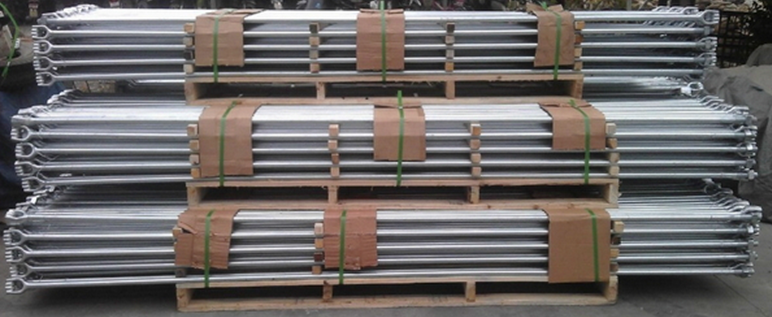Example of machining straight steel wall of hardened steel SKD11 (60HRC) with CBN end mill (machining conditions: tool: 1CBN-CR-EDSφ10 (2 teeth) 2 hard alloy coated end mill φ10 (6 teeth); workpiece material : SKD11 (60HRC); cutting speed: 1400m / min (12740 / min); 220m / min (640 / min); feed rate: 11270mm / min (0.05mm / tooth); 2190mm / min (0.05mm / tooth) Elongation: 50mm; depth of cut: 1αr=0.5mm (αa=5mm×8 times); 2αa=40mm, αr=0.01mm; tilt: 12~6μm; 210μm or more; cooling method: air cooling; processing machine :Vertical Machining Center). A 40 mm wide straight wall is machined using a short blade long neck end mill. High-speed cutting is performed at an axial depth of cut of 5 mm, and the amount of inclination of the machined surface is 6 μm or less. The machined end mills wear very little and can continue to cut. An example of machining of the CBN ball end mill series CBN-SXB with a spiral edge. This ball-end spiral blade facilitates the formation of thin chips and intermittent cutting effects, and is generally used for carbide ball end mills. Although the cutting edge of the CBN milling cutter is very difficult to sharpen, OSG uses the spiral blade as the basic blade shape and has developed a ball end mill that is particularly suitable for CBN tool geometry (negative angle). market. Due to the dual effect of this kind of spiral edge and strong CBN special material, CBN-SXB can use a larger depth of cut than the previous CBN ball end mill, even in the complex shape of machining cutting load changes. Stable cutting is also possible. Cutting example of SKH51 (65HRC) metal mold simple model processed with CBN-SXB (Processing conditions: tool used: CBN-SXB R1×5; workpiece material: SKH51 (65HRC); spindle speed: 40000/min; feed rate: 6000mm/min (0.075mm/t); depth of cut: αa=0.03mm, Pf=0.05mm; cooling method: MQL Processing machine: vertical machining center). The path of the cutter is not a straight line, but a cavity shape is machined at a local unevenness. The state of the machined surface indicates that it is not necessary to say that in the initial stage of cutting, even after the length of the pass reaches 70 m, the cutting marks are uniform and maintain a good cutting state. Related technology for high speed machining of hardened steel High-speed milling of hardened steel produces a large amount of cutting heat, and in fact most of the heat is transferred to the chips. Therefore, it is important to remove the chips from the cutting zone and the workpiece as quickly as possible. However, if a large amount of water-soluble cutting fluid having a cooling effect is used to remove chips, repeated intense heating and cooling in a short period of time will cause thermal cracking and greatly shorten the tool life, so care must be taken. In order to avoid this problem, the effect of using the blow cooling method is remarkable, especially the micro-lubrication (MQL) cutting is effective for improving the surface quality of the machine. MQL does not produce a sharp cooling effect that induces hot cracks. The coolant contains a trace of oil to improve the lubrication performance and helps the cutting edge enter the machined surface, thus achieving good processing quality. Thereby, not only the surface roughness of the machined surface can be improved, but also the waviness and the perpendicularity of the machined surface can be improved, and more importantly, the stability of the tool life can be maintained. It is important to note that the rotational vibration of the tool not only deteriorates the quality of the machined surface, but also shortens the tool life. Especially when cutting hardened steel, small vibrations are also easy to induce tool chipping. Therefore, the clamping method of the tool and the workpiece becomes particularly important. The hot-loading shank has good dynamic balance performance, high clamping precision and large holding force, which can be said to be a very effective tool clamping method. The cutting examples of hardened steel are described above. It can be said that in the past, it was only possible to rely on the field of grinding and electric discharge machining, and it is now completely possible to replace it with cutting. Previous page
Anchor Rods & Grounding Rods
Thimble Eye, Twin Eye, Triple Eye and Oval Eye Anchor Rods are used for guying with expanding and cross plate anchros. Hot dip galvanized to meet ASTM A153 specification.
No Wrench Anchor are used for guying wires at utility poles. Eye dimensions are the same as Anchor Rods.
Expanding Anchor are made for installation in hole augered by power drillers. A retainer on the bottom holds the nut from the forged eye rod. Black Painting or Hot dip galvanized finish.
Ground Rods are used as a grounding electrode for building and poles. These rods have a cone point for easy driving and a plain end for attaching a ground rod clamp. Hot Dip Galvanized or Copper plating finish.
Extension Anchor Rod used in conjunction with internally tapped anchors and couplings or eye nuts.
Galvanized, Ground, Rod, Copper, Earth, Rock, Extension, Twin eye, Triple, Thimbleye, Thimble eye, Expanding, Wrench Ningbo Yokelink Machinery Co.,Limited , https://www.yokelink.com